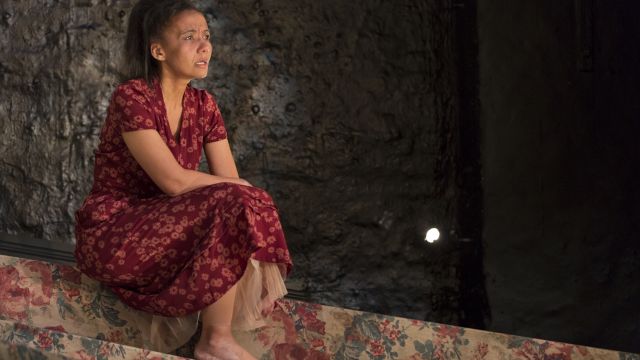The Bleeding Tree
At the heart of The Bleeding Tree is the question of why, as neighbours and friends, do we turn a blind eye to the perpetration of domestic violence. It is an extraordinary work of ‘high art,’ with rich integrity. Superb craftsmanship is skillfully fused together by Director Lee Lewis.
The Bleeding Treecommences with an abrupt change of atmosphere, brutally bringing the audience into the pitiless world of a desperate story.
I’m not giving away any secrets by quoting the press release: “The only issue now is disposing of the body.” This tells us there has been a death, but what happens next is pretty wild, wacky and unexpected. The production is darkly imbued with an Australian Gothic sensibility.
Three women portray a Mother (Paula Arundell) and her two daughters (Brenna Harding and Sophie Ross) who live on a desolate and fairly isolated country property. We witness a grim and gruesome incident perpetrated by the Mother. Subsequently as events unfold we better understand the cause and the overall situation. We are perhaps not inclined to judge, as there seems to be little room, or need, for remorse or regret.
The story is told partly through the stilted personal language of the three women and partly through the voices of visiting neighbours. The girls’ responses to, and sharp asides about, these intrusions, are very telling.
Writer Angus Cerini’s poetic language, that at times even rhymes, does much to create atmosphere and convey the intimacy of the relationship between the three. When just talking amongst themselves they use a kind of stilted abbreviated language. This also suggests isolation. Indeed, these three women have been isolated by a powerful, controlling man.
The acting is superb and all three actors are deeply convincing as they represent the essence of what it is to be relentlessly tormented and afraid of ferocious violence.
Each also takes on personas of visiting men to startling effect. Paula Arundell most particularly displays extraordinary vocal versatility in speaking as a rough but caring bloke. It is easy to she why she is a Helpmann recipient for this performance. She shines, but so do Harding and Ross as they very convincingly embody young girls.
Cerini’s words paint strikingly vivid and memorable visual imagery.
Lighting (Verity Hampson) at times bright and at others shadowy endows the story with added dimension.
Designer Renee Mulder has stripped everything back. The three actors work on a bare stage, which is partially raised in tiers and painted with a floral carpet like design. The costuming feels timeless and is perhaps indicative of the 1950s or 60s or 80s. The two young girls have that grubby look of neglected or indeed abused children.
Sound (Steve Toulmin), at first deeply disturbing and insidious white noise, is later used in various ways to assist in creating assorted atmospheres and imagery.
As I watched I was continually referring to my memories of Cerini’s work Animals, directed by Susie Dee and presented in November 2016 at Theatre Works. Both are extraordinary pieces of theatre that very bravely explore issues around the social problem of domestic abuse.
An extraordinary work for six voices - or three voices, six characters that are richly embodied in this marvelous production.
Strong and timely.
Suzanne Sandow
Image: Paula Arundell - Photographer: Brett Boardman.
Subscribe to our E-Newsletter, buy our latest print edition or find a Performing Arts book at Book Nook.

